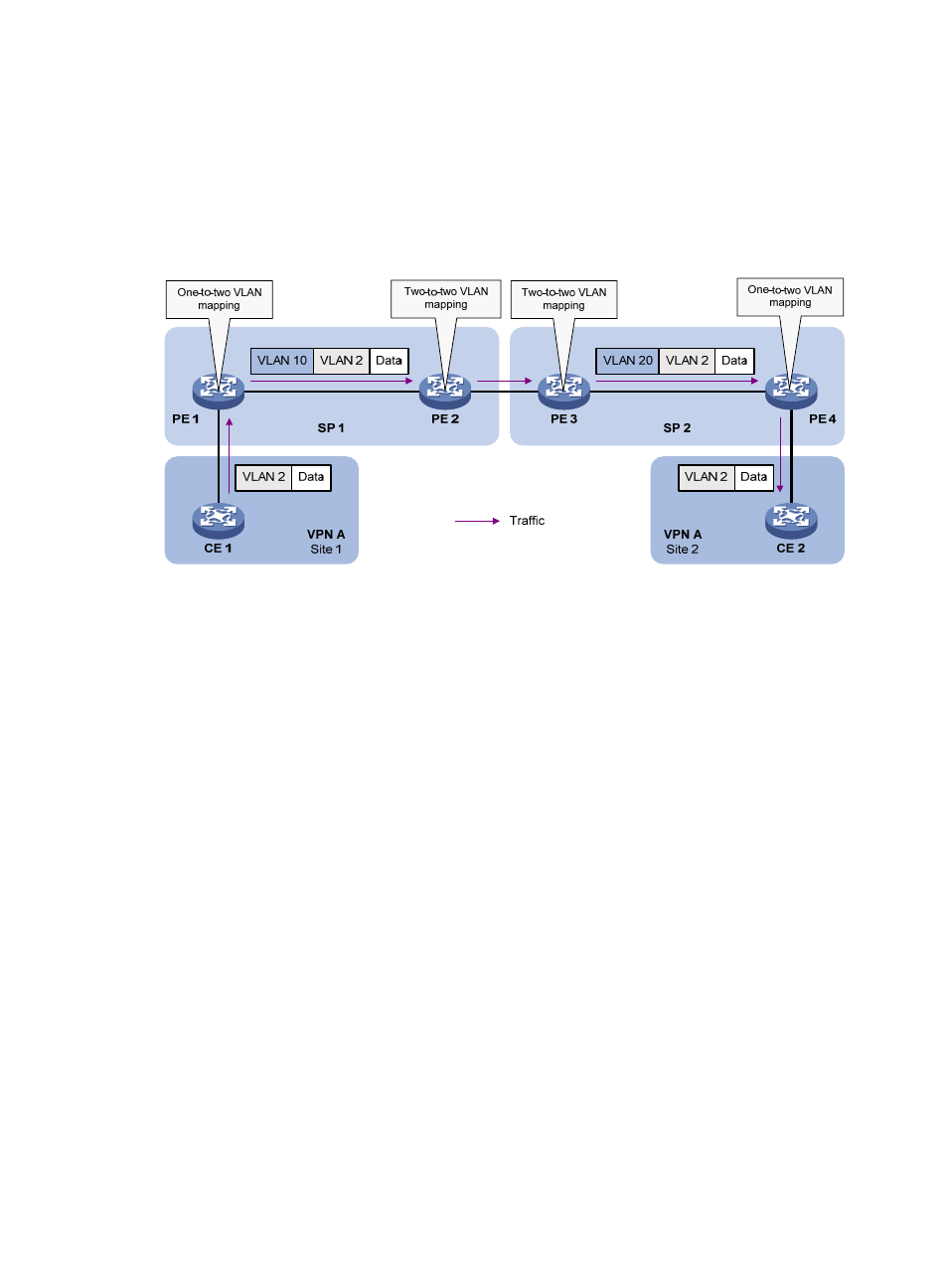Concepts and terms – H3C Technologies H3C S12500 Series Switches User Manual
Page 163

150
Application scenario of one-to-two and two-to-two VLAN
mapping
shows a typical application scenario in which two remote sites in VPN A, Site 1 and Site 2,
must communicate across two SP networks, SP 1 and SP 2.
Figure 49 Application scenario of one-to-two and two-to-two VLAN mapping
Site 1 and Site 2 are in VLAN 2. The VLAN assigned to VPN A is VLAN 10 in the SP 1 network and
VLAN 20 in the SP 2 network.
If Site 1 sends a packet to Site 2, the packet is processed on the way to its destination using the following
workflow:
1.
When the packet tagged with VLAN 2 arrives at the edge of network SP 1, PE 1 tags the packet
with outer VLAN 10 by using one-to-two VLAN mapping.
2.
When the double-tagged packet enters the SP 2 network, PE 3 replaces the outer VLAN tag (VLAN
10) with VLAN 20 by performing two-to-two VLAN mapping.
3.
When PE4 receives the packet with outer VLAN tag 20, it removes the outer VLAN tag and
forwards the packet to VLAN 2.
You can use QinQ to implement one-to-two VLAN mapping. For more information about QinQ, see
"Configuring QinQ."
Concepts and terms
shows a simplified network to help explain the concepts and terms that you might encounter
when working with VLAN mapping.